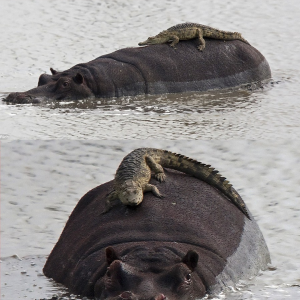The small reptile lives in the biodiverse, still largely unexplored region of India’s Western Ghats.

The newfound lizard sports rich highlights of gold and blue against a dark background, just like the iconic painting “The Starry Night.”
Half a world away and 133 years after Vincent van Gogh painted “The Starry Night,” the masterpiece sprang to Ishan Agarwal’s mind when he spied a small, colorful gecko among the rocks.
In 2022, the biologist traveled to the eastern slopes of the Western Ghats in Tamil Nadu, a rugged series of species-rich mountains running parallel to India’s western coast, to look for invertebrates new to science. Agarwal, with the Thackeray Wildlife Foundation in Mumbai, logged more than 12,400 miles over many months, not finding much beyond the ticks that covered him head to toe. (Read about the purple pig-nose frog that’s native to the Western Ghats.)
He began to wonder what he was trying to accomplish. Then, a glimpse of the blue-and-yellow gecko, evoking those iconic swirls of mustard yellow and deep cobalt of van Gogh’s painting, changed all that.
The van Gogh starry dwarf gecko, as scientist Tejas Thackeray dubbed it, is one of two new, closely related species in the Cnemapsis genus described in a recent study in the journal ZooKeys.
“We have incredibly diverse fauna, but we know little about it,” Agarwal says of the Western Ghats, a biodiversity hot spot where new species are regularly discovered.

Because C. vangoghi lives in a tiger reserve, it may be more protected from human interference, experts say.
PHOTOGRAPH BY AKSHAY KHANDEKAR
A lizard of a different color
That first C. vangoghi specimen, found in the Srivilliputhur-Megamalai Tiger Reserve, was an male that resembled another recently discovered Cnemaspis species named C. galaxia. So it wasn’t until Agarwal got the reptile, whose body is about an inch long, back to the lab and analyzed its DNA that he found it was genetically distinct.
“One part of the reason we are discovering so many species is that we have molecular data that can show two different populations actually represent two different species,” Agarwal says. “These species are ridiculously diverse.” (Learn how geckos evolved their sticky feet.)
Like its cousin, the male C. vangoghi displays brighter colors than females. Agarwal also collected female specimens on his trip, which sport muted hues of blue and yellow.
Travis Hagey, an evolutionary biologist at the Mississippi University for Women, says that this distinctive coloration can make the gecko more visible to predators, but females favor the robust hues when selecting mates.
“It’s a constant push and pull,” he says.
Understudied species
And while it’s too soon to say what, if any, threats these geckos are facing, Agarwal says that the reptiles’ discovery within the tiger reserve gives them a safety buffer that many other species don’t have.
Another benefit to C. vangoghi is the Western Ghats are mostly undeveloped, in part because their steep, mountainous terrain is difficult to access—even for experienced researchers.
Challenges persist at lower elevations, where it’s easy to miss new species hiding in shady, rocky areas on the forest floor or along streams.
On top of that, lizards are especially understudied, says James Stroud, an evolutionary ecologist at Georgia Tech who wasn’t involved in the study.
“There just aren’t enough lizard biologists,” he says.
‘They’re all special’
But that hasn’t stopped Agarwal and other scientists from launching expeditions into region, efforts that have gained momentum in recent years.
For instance, 20 years ago, scientists knew of only a handful of Cnemaspis species. Now, there are more than a hundred recorded in India and Sri Lanka alone.
From a global perspective, at least 2,300 gecko species exist in the scientific literature, a major increase from a thousand species only a few years ago, says Aaron Bauer, an ecologist at Villanova University and gecko expert who was not involved in the study.
“There are new geckos being described all the time, and India is one of those areas where there’s really a lot going on,” he says. (See beautiful photos of the Western Ghats’ landscapes.)
To Hagey, the discovery adds another piece of knowledge to Earth’s biodiversity puzzle.
“These papers are important because they’re another step forward in understanding how complicated our ecosystems are,” he says.
“We have to understand that, ‘Hey, there’s a whole group of geckos here that we didn’t even know about, and they’re all special.”





